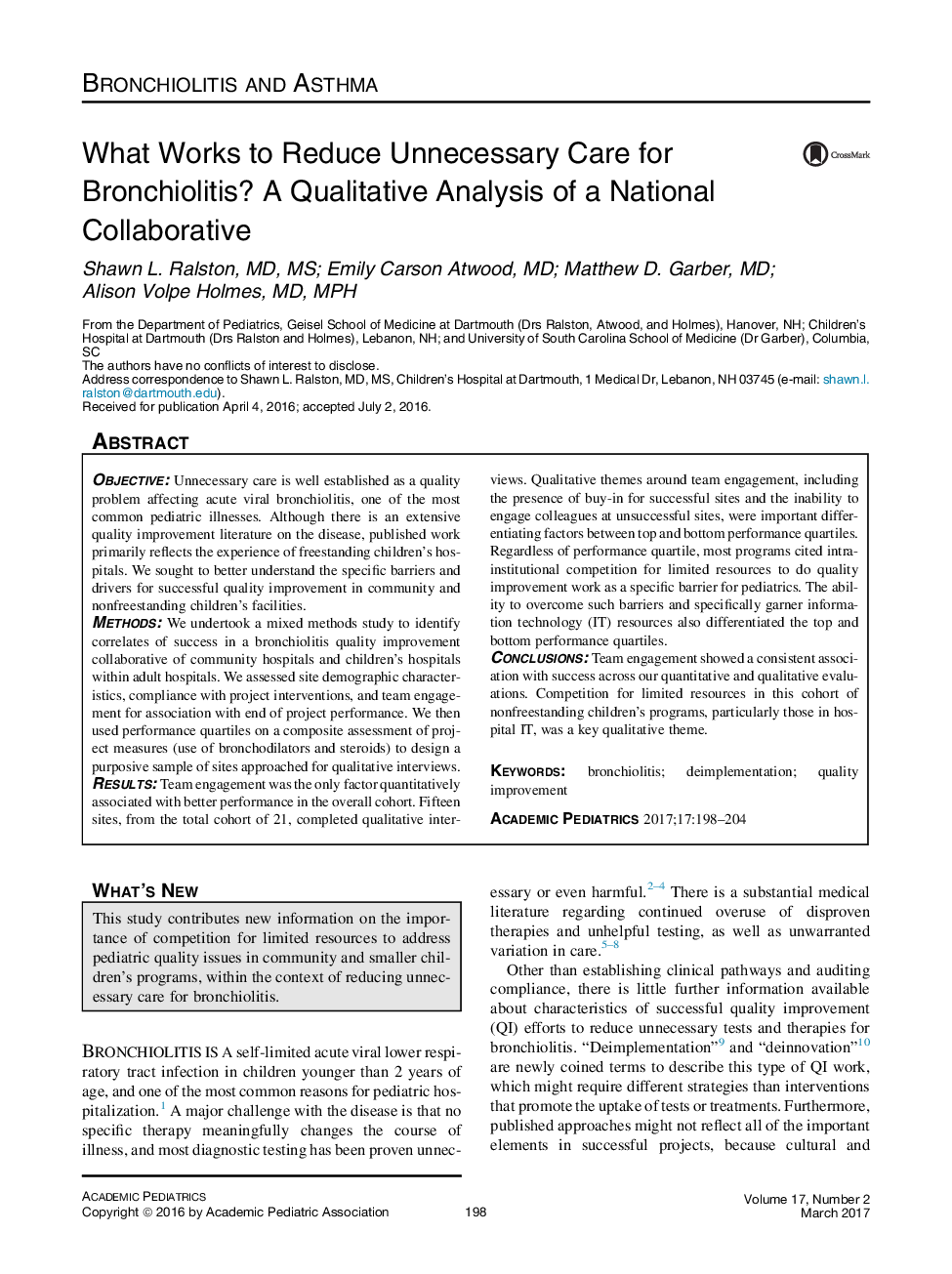| Article ID | Journal | Published Year | Pages | File Type |
|---|---|---|---|---|
| 5717051 | Academic Pediatrics | 2017 | 7 Pages |
ObjectiveUnnecessary care is well established as a quality problem affecting acute viral bronchiolitis, one of the most common pediatric illnesses. Although there is an extensive quality improvement literature on the disease, published work primarily reflects the experience of freestanding children's hospitals. We sought to better understand the specific barriers and drivers for successful quality improvement in community and nonfreestanding children's facilities.MethodsWe undertook a mixed methods study to identify correlates of success in a bronchiolitis quality improvement collaborative of community hospitals and children's hospitals within adult hospitals. We assessed site demographic characteristics, compliance with project interventions, and team engagement for association with end of project performance. We then used performance quartiles on a composite assessment of project measures (use of bronchodilators and steroids) to design a purposive sample of sites approached for qualitative interviews.ResultsTeam engagement was the only factor quantitatively associated with better performance in the overall cohort. Fifteen sites, from the total cohort of 21, completed qualitative interviews. Qualitative themes around team engagement, including the presence of buy-in for successful sites and the inability to engage colleagues at unsuccessful sites, were important differentiating factors between top and bottom performance quartiles. Regardless of performance quartile, most programs cited intrainstitutional competition for limited resources to do quality improvement work as a specific barrier for pediatrics. The ability to overcome such barriers and specifically garner information technology (IT) resources also differentiated the top and bottom performance quartiles.ConclusionsTeam engagement showed a consistent association with success across our quantitative and qualitative evaluations. Competition for limited resources in this cohort of nonfreestanding children's programs, particularly those in hospital IT, was a key qualitative theme.
